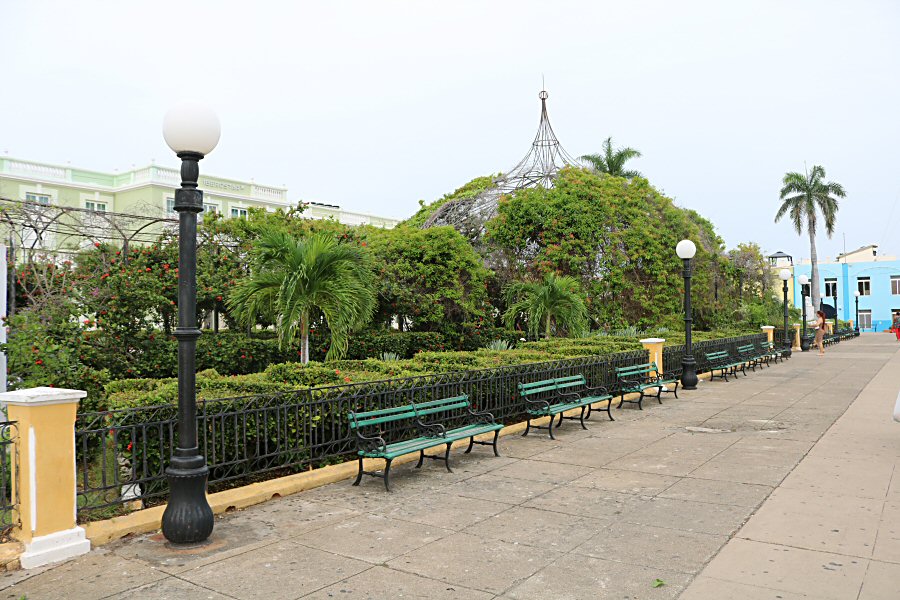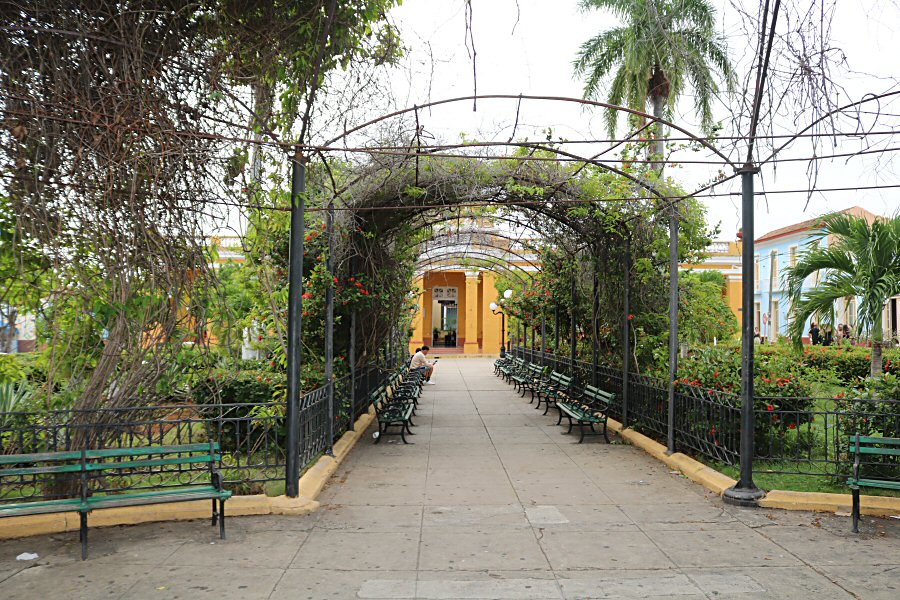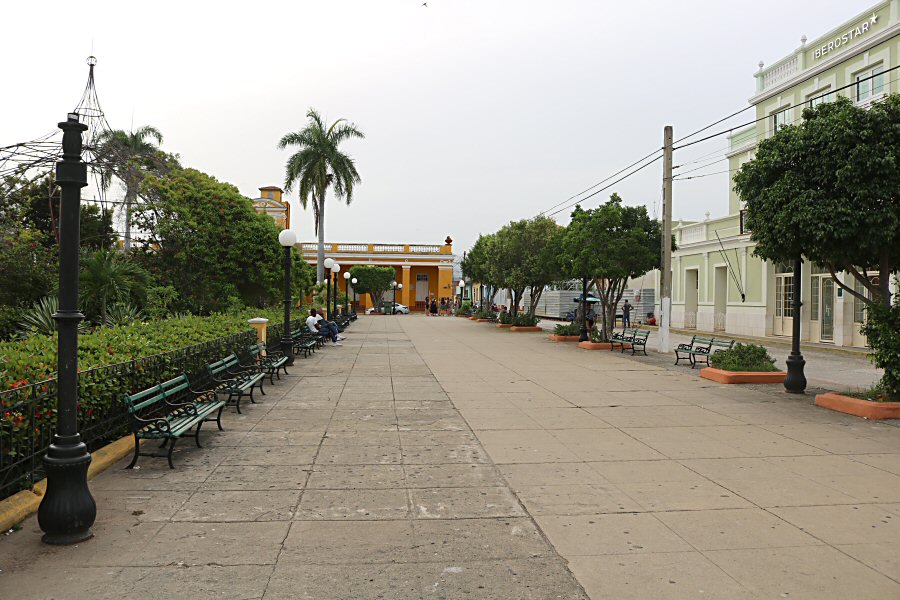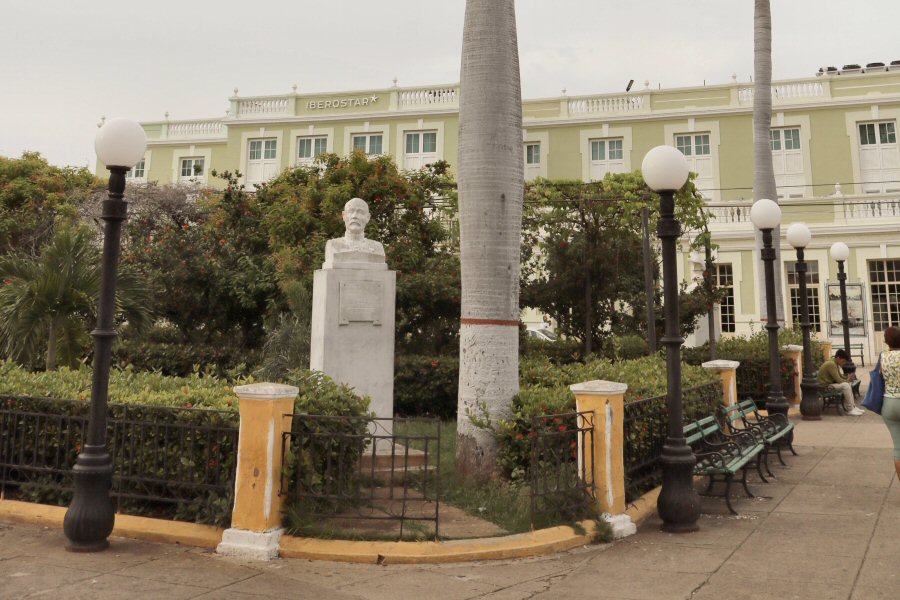Localization
The Parque Céspedes is bordered by Jesús María, San Procopio and Chiquinquirá streets.
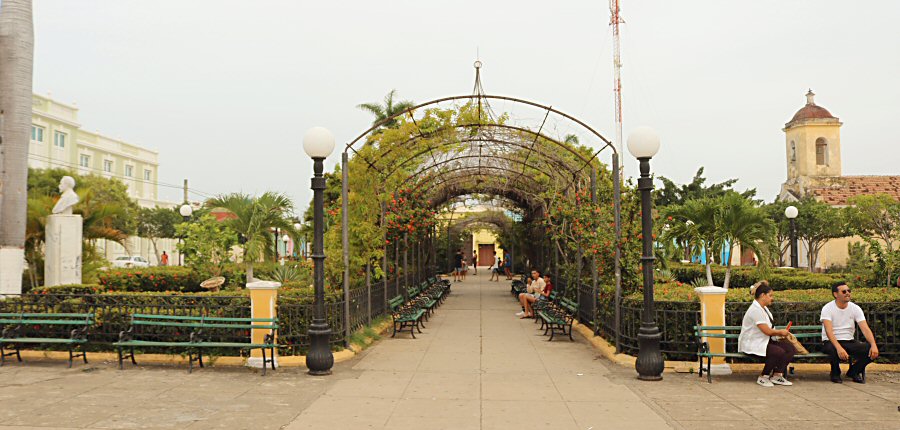

Plaza Mayor may be the city center for sightseers coming from outside of Trinidad, but as far as the town’s population is concerned, Parque Céspedes is Trinidad’s main square. It’s markedly more lively, particularly in the evenings.
History
Records about this square date back to 1805. Ambrosio Hurtado de Mendoza, José Mariano Borrell, Rafael Ponce, José de Villafañe, Pedro José Iznaga and Juan Francisco Ramírez, the city's notables at that time, asked the city council to make efforts to decorate the areas within the city limits with ostentatious houses, because the square, which appeared to be an extension of the Jesús María street, was used mostly as a market place. With the construction of the Iglesia de San Francisco de Paula adjacent to the area at the beginning of the 19th century, it began to be used also as a place where believers gathered.
Resigned from the presence of engineer Manuel Pastor y Landero in Trinidad, one of the engineers who built the summer house for general captains in the Quinta de los Molinos area in Havana in 1818, the city consul asked this person to project the square as a proper market.
In Pastor's project, the square was bounded by Barracón street (today's Mercedes street) to the south, Jesús María street to the north, and Las Guácimas street (today's San Procopio street) to the east. The sales booths were located around a spacious interior patio. Calculating that 10,842 pesos were needed for this work, Pastor donated 2,882 pesos for the construction of the front part of the market in order to realize the project as soon as possible.
Over time, the square turned into a muddy and unbearably dusty place that did not even allow walking on it. The unpleasant view of the fish market or the place occupied by the fishmongers in the center of the square and the hung bells of the neighboring chapel of Paula, which gives the appearance of a gallows in one corner of the square, started to disturb the city administration.
The Governor Pedro Carrillo de Albornoz who complains a lot about the situation, decided to change the function of this space, transforming it into the first recreational park of the town. In 1840, by order of Carillo, the area was leveled, the fishermen's part was demolished, the bells of the church of Paula were moved. To surround the area, he ordered the fences to be bought from the United States and had the floor paved with so-called Bremesas stones without import duties. The marketplace was moved to the area at the intersection of Chiquinquirá and Mercedes streets.
On April 23, 1840, the city council decided to name the area Plaza Carillo. In addition to bringing a beautiful square to the city, the successful governor also carried out unforgettable works such as ensuring the construction of a cistern with a water capacity of more than 600 barrels, establishing the first fire department in the city by importing pumps from the USA, paving the roads and the installation of oil lighting in the city.
The square, called Plaza Carillo, was bordered by Jesús María, San Procopio and Chiquinquirá streets, and the street in front of the City Hall, today called Asamblea Municipal del Poder Popular. When the square was newly shaped, there were four flowerbeds with a circular space in the center. It also had masonry seats. A nice gazebo was erected with an elegant iron rotunda, which had collapsed during the hurricane of 1844. The gazebo was later rebuilt in a stronger and more aesthetic way with the careful work of José Guiraud. Gas lamps were installed in 1859 and the statue of Terpsichore was replaced by a street lamp.
During the Republic period, a bust of Carlos Manuel de Céspedes was erected in one of the gardens in the square and thus, the square began to be called Céspedes Park.
In 1907, a granite gazebo was built under the original iron one, which was later demolished. The Bremesas stone paving was replaced by cement paving. In 1909, square's railings, kept in the courtyard of the City Hall, were put up for sale, but they could not be sold until 1911. The low wall around the park in the square was eliminated and the flowerbeds were modified by dividing them into four by a path on diagonal. In 1928, electric lighting was installed in the square and the following year a masonry gazebo was built.
